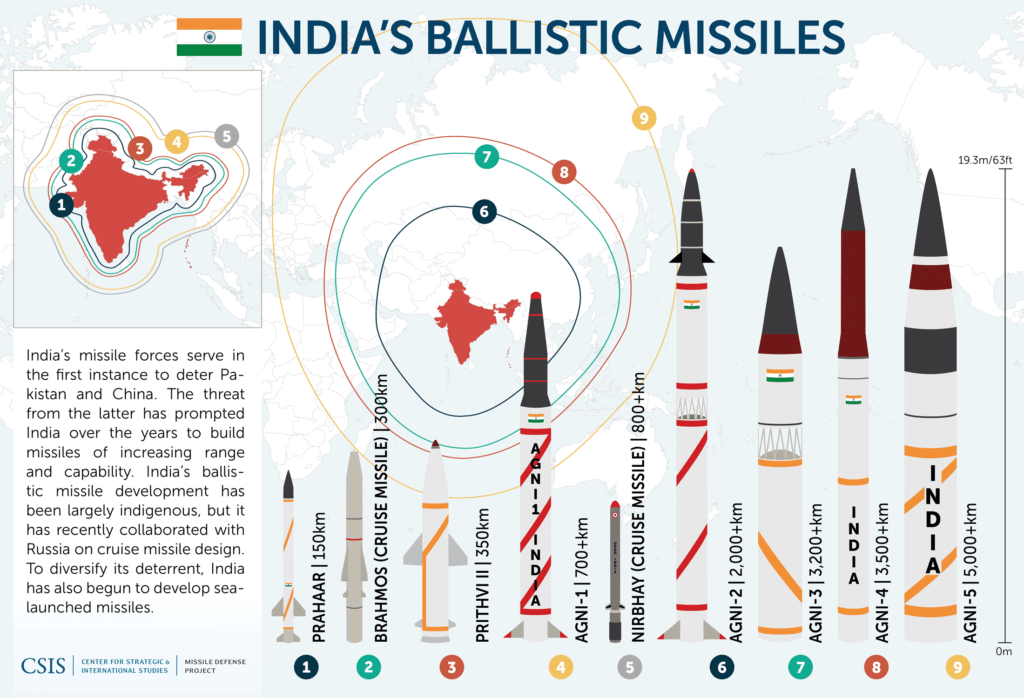 India’s missile arsenal serves a number of purposes in New Delhi’s defense strategy. Fundamentally, its ballistic missile arsenal is a means to deliver nuclear weapons to deter both Pakistan and China. The latter requirement has pushed India to develop longer range missiles and to diversify its delivery platforms beyond mobile land-based missiles. To this end, India is developing ship- and sub-launched ballistic missiles, and has collaborated with Russia on cruise missile development.
India’s missile arsenal serves a number of purposes in New Delhi’s defense strategy. Fundamentally, its ballistic missile arsenal is a means to deliver nuclear weapons to deter both Pakistan and China. The latter requirement has pushed India to develop longer range missiles and to diversify its delivery platforms beyond mobile land-based missiles. To this end, India is developing ship- and sub-launched ballistic missiles, and has collaborated with Russia on cruise missile development.Ostensibly these developments are all to support India’s minimum deterrence doctrine, but as their missile arsenal develops, doubts grow about how firmly they will hew to that doctrine. In particular, the developments of both canister launched missiles, which can be fired much more quickly, and MIRV technology, which was often considered a first strike technology during the Cold War, have raised questions about the future trajectory of New Delhi’s posture. Still there is little discussion in India about abandoning its declared no-first-use doctrine, and many of these moves can be thought of as responses to developments in the Chinese arsenal.
No comments:
Post a Comment